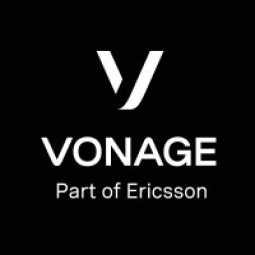Download PDF
Vaillant is Always in hot water (Thanks to Vonage)
Technology Category
- Application Infrastructure & Middleware - API Integration & Management
Applicable Industries
- Electronics
Services
- System Integration
The Challenge
Vaillant Group, a leading provider of heating and hot water systems, was facing several challenges with its existing call handling system. The company, which receives over 600,000 inbound calls annually, was dealing with limited inbound trunk capacity, poor integration with Salesforce, limited call recording storage, and manual outbound calling. These issues were affecting the efficiency of their 122-seat contact center and the quality of their customer service. Vaillant needed a solution that could improve their call handling system and integrate seamlessly with their existing Salesforce CRM.
About The Customer
The Vaillant Group is a renowned company that has been providing efficient, innovative, and environmentally friendly heating and hot water systems for over 140 years. The company is known for its forward-thinking approach, which includes expertise in the latest renewable technologies. Vaillant sells over 400,000 boilers a year in the U.K. and is listed on the Superbrands Top 100. Premium customer service is core to the Vaillant offering and with over 600,000 inbound calls annually dealing with technical and customer service queries, the company needed a robust and efficient call handling system.
The Solution
Vaillant turned to Vonage for a solution to their call handling challenges. Vonage implemented their Contact Center for Salesforce in Vaillant's operations. This solution links inbound and outbound calls directly to the CRM database, providing agents with all relevant information and greatly improving the customer experience. The solution also includes unlimited call recording capacity, linking each call to the customer record for compliance, training, and dispute resolution. Additionally, the solution features call whispers, which alert agents to the purpose of the call before the customer comes on the line. The system is easy to operate and allows Vaillant to make system changes without relying on expensive consultants or vendors. The implementation of Vonage’s outbound dialer has also boosted efficiency by automating the process of placing 250,000 customer calls to confirm appointments.
Operational Impact
Quantitative Benefit
Related Case Studies.

Case Study
Remote Temperature Monitoring of Perishable Goods Saves Money
RMONI was facing temperature monitoring challenges in a cold chain business. A cold chain must be established and maintained to ensure goods have been properly refrigerated during every step of the process, making temperature monitoring a critical business function. Manual registration practice can be very costly, labor intensive and prone to mistakes.

Case Study
Cloud Solution for Energy Management Platform-Schneider Electric
Schneider Electric required a cloud solution for its energy management platform to manage high computational operations, which were essential for catering to client requirements. As the business involves storage and analysis of huge amounts of data, the company also needed a convenient and scalable storage solution to facilitate operations efficiently.

Case Study
Leveraging the IoT to Gain a Competitive Edge in International Competition
Many large manufacturers in and outside Japan are competing for larger market share in the same space, expecting a growing demand for projectors in the areas of entertainment, which requires glamor and strong visual performance as well as digital signage that can attract people’s attention. “It is becoming more and more difficult to differentiate ourselves with stand-alone hardware products,” says Kazuyuki Kitagawa, Director of Service & Support at Panasonic AVC Networks. “In order for Panasonic to grow market share and overall business, it is essential for us to develop solutions that deliver significant added value.” Panasonic believes projection failure and quality deterioration should never happen. This is what and has driven them to make their projectors IoT-enabled. More specifically, Panasonic has developed a system that collects data from projectors, visualizes detailed operational statuses, and predicts issues and address them before failure occurs. Their projectors are embedded with a variety of sensors that measure power supply, voltage, video input/ output signals, intake/exhaust air temperatures, cooling fan operations, and light bulb operating time. These sensors have been used to make the projector more intelligent, automatically suspending operation when the temperature rises excessively, and automatically switching light bulbs. Although this was a great first step, Panasonic projectors were still not equipped with any capability to send the data over a network.








